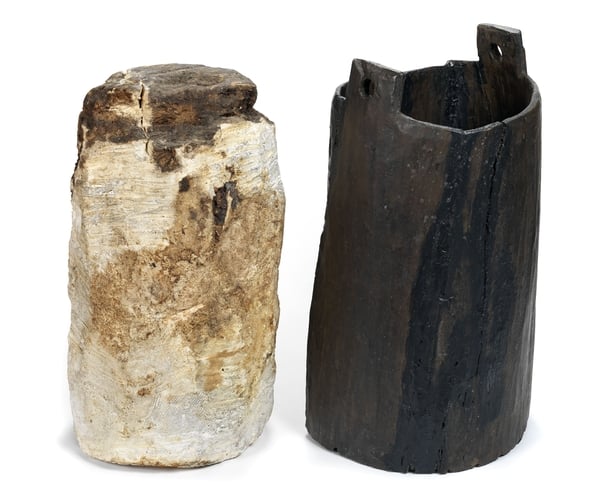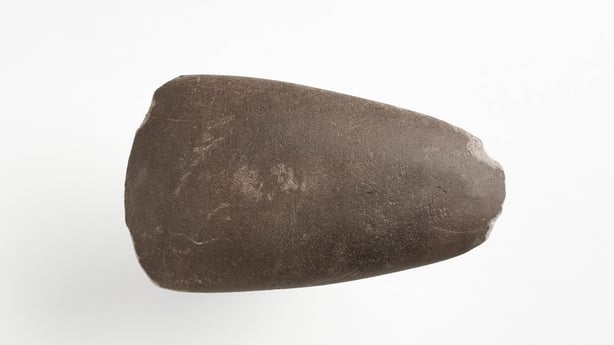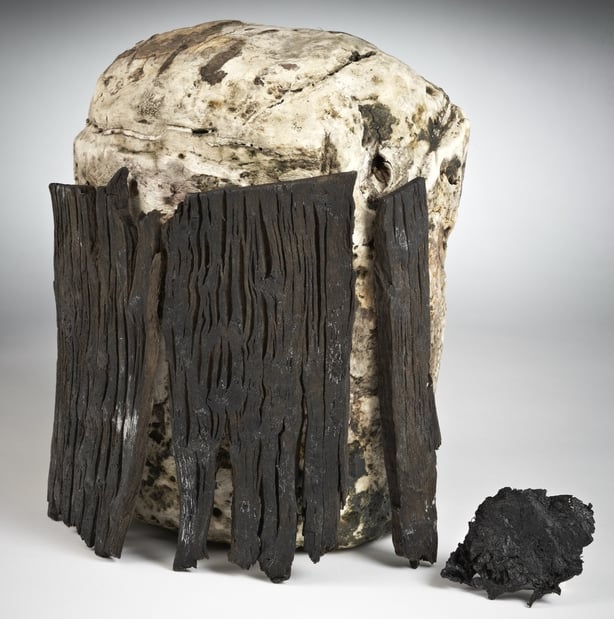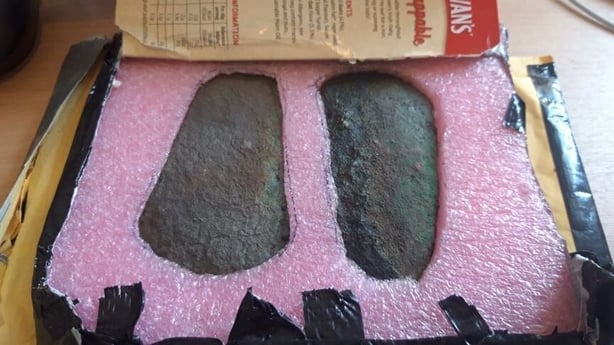Human remains, cannonballs, bullets, bog butter and a haul of more than 600 clay pipes were among the archeological finds handed into the National Museum of Ireland (NMI) since July 2023.
Forty-nine sets of human remains were discovered and handed into the NMI over the 12-month period.
Human remains were uncovered in Co Sligo, with more found in Co Carlow along with pottery, charcoal and the remains of animals.
Further human remains were found in Co Roscommon later in the year, in addition to finds in Co Cork and Co Donegal.
Throughout the rest of 2023 and into 2024, discoveries of human remains were made in Sligo, Galway, Clare, Meath, Westmeath Louth, Waterford, Dublin, Kildare, Kerry, Tipperary, Mayo and Donegal.

These records were obtained by RTÉ News through the Freedom of Information Act request submitted in mid-July.
They show that in the 12 months from July 2023 until July 2024, more than 2,000 artefacts found by members of the public and archaeologists were obtained by the NMI.
A trove of 636 clay pipes was handed in from Sligo in 2023.
We need your consent to load this rte-player contentWe use rte-player to manage extra content that can set cookies on your device and collect data about your activity. Please review their details and accept them to load the content.Manage Preferences
Before cigarettes were popularised in Ireland, clay pipes were used for smoking and, according to the Galway City Museum, were known as "dúidíns".
They were often decorated with various symbols and colours to express a smoker's political or social views.
Elsewhere, there were finds of bog butter in Galway, Longford and Westmeath.
Bog butter, which is also known as butyrellite, is described as an old method of producing and preserving butter by burying it in peat bogs inside of wooden containers.

It is believed that the practice dates to the first century AD in Ireland. In 2011, there were reports of 50kg of bog butter being discovered in Tullamore, Co Offaly.
There were also multiple finds of tools and weapons including: spearheads, axeheads, arrowheads, blades and knives, a billhook, palstave, mallets, anvils, a musket ball, three bullets in Cork and three cannonballs in Sligo.
Keeper of Antiquities at the National Museum of Ireland Maeve Sikora has said one of the roles of the antiquities division is to protect the portable heritage of Ireland for everybody and the museum is also the State repository for all artifacts found here.
She said that there were items of great interest from 8000BC all the way into the post-medieval period.
"For example relating to food, we've had a number of reports of signs of bog butter, which is actually butter and for the earlier period of the last 12 months, we've managed to radiocarbon date some of that.
"So, we know at least one of our examples dates to about 1400BC."

She said there have been other finds, including a lead figurine from Co Cork that was reported by someone building a stone wall, "and we're in the course of researching that, but it suggests perhaps an early first or second century date."
"The vagaries of museum documentation means that every single piece must be accounted for and have a number. So, it looks like an awful lot of material, but some of that would fit in a quite a small box actually".
She said that the bog butter "is still surviving" if not edible.
"It's actually a very interesting ancient phenomenon in Ireland. So, we know it dates back because of the radiocarbon dates we've been able to do on it, on material in the museum collection, we have about 500 examples that we know of, a little bit more perhaps, and it dates to as early as around about 2000BC, so you're talking about an interest in dairy for a very long time."
She described the bog butter as being like a white wax.
"It really smells. And anybody who's found it or anybody who's working in the museum will tell you it has a very distinctive smell as well. And it's often noticed on bogs or it has been in the past because of its colour. So, while the bog is completely brown, the bog butter will be this white material in the middle that the crows are landing on and eating".
Among the other discoveries donated to the NMI were rings, brooches, pins, medals, a badge and musical instruments.
Large amounts of pottery were found in Dublin, Meath, Carlow and Sligo, with other finds scattered across Ireland.
Meanwhile, in Roscommon 66 coins were uncovered, according to the records.
Vast quantities of beads were discovered in 2023 - approximately 1,877 in total - but the location of the finds were not recorded.
The release of the records comes after 4,000-year-old Early Bronze Age axeheads were sent anonymously to the NMI at the end of June. They were subsequently dated to around 2150-2000 BC.

They were accompanied by a letter stating they were discovered in the Westmeath area using a metal detector.
However, it is against the law to search for archaeological objects in Ireland using a metal detector unless a person has received written consent from the Government.
People can be fined up to €63,486 and get up to three months in jail if found to be in breach of the law.






